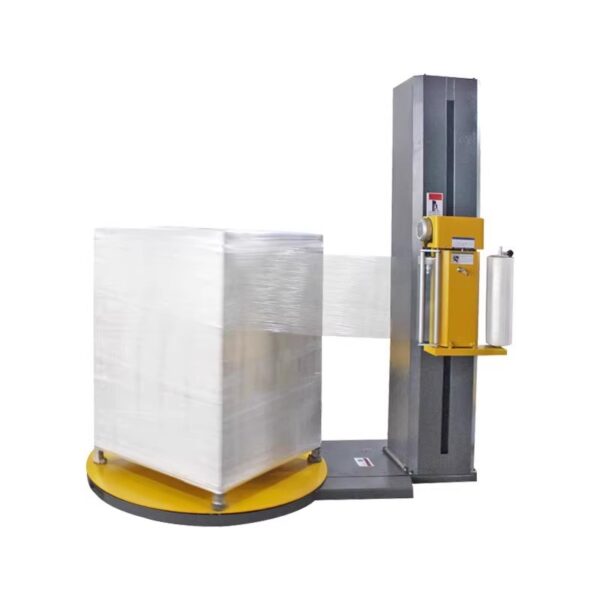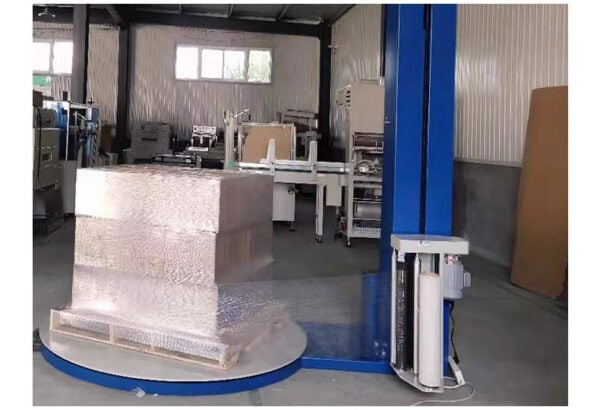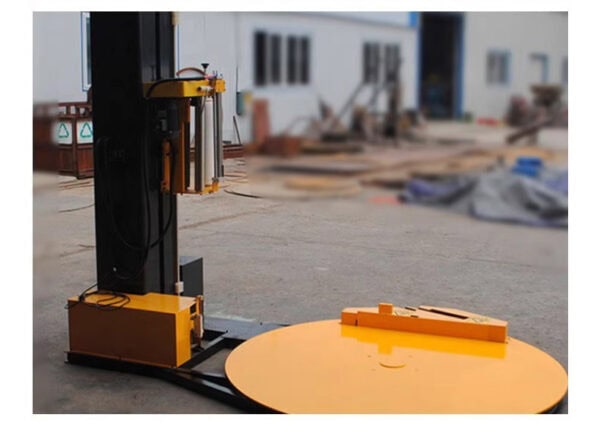When you move stuff from place to place, if it gets damaged, you lose money. If your packaging job is terrible, you can wind up with a lot of problems.
Stretch wrapping machines are industrial devices that wrap stretch film around products to protect them during transport. They stabilize loads, reduce product damage, and increase warehouse efficiency.
Now let’s talk about how stretch wrapping machines work, their key features, and their applications in various industries.

What Is a Stretch Wrapping Machine?
A stretch wrapping machine is designed to wrap stretch film tightly around products or pallets. This process helps secure items for transportation or storage, ensuring they stay in place and avoid damage.
The machine stretches the film as it wraps, which allows for a snug fit that stabilizes the load. There are various types of stretch wrapping machines, ranging from manual to fully automated models, to meet different business needs.
These machines are widely used in industries like food and beverage, manufacturing, and logistics, where ensuring the safety of products during transit is crucial.
Key Components of Stretch Wrapping Machines
- Turntable: A rotating platform where the product or pallet is placed, allowing even wrapping of the stretch film around the load.
- Film Carriage: Holds the roll of stretch film and controls the tension as the film is applied to the load.
- Control Panel: Allows the operator to adjust the wrapping parameters, such as the number of wraps and film tension.
These components work together to automate the process of wrapping goods, making it efficient and consistent.
Types of Stretch Wrapping Machines
Manual Stretch Wrapping Machines
Manual stretch wrappers require the operator to apply the film by hand, rotating the pallet or moving the film roll around it. This option is typically used in smaller operations where speed and volume are not major concerns.
Semi-Automatic Stretch Wrapping Machines
Semi-automatic machines handle some of the wrapping process, such as rotating the pallet, while the operator manages the film application. This type is ideal for mid-sized operations that require faster throughput and more consistent wrapping.
Automatic Stretch Wrapping Machines
Automatic stretch wrapping machines handle the entire wrapping process without manual intervention, making them perfect for high-volume businesses. These machines offer significant efficiency gains, especially when dealing with large batches of products.

Benefits of Stretch Wrapping Machines
Enhanced Protection
One of the primary benefits of using a stretch wrapping machine is the enhanced protection it provides to products. The tight wrapping ensures that items are safeguarded against moisture, dust, and potential damage during transportation.
Cost Savings
Automated machines can reduce the amount of film used per pallet, minimizing material waste and reducing overall packaging costs. This makes them a cost-efficient option for businesses with high packaging demands.
Labor Efficiency
By automating the wrapping process, businesses can reduce labor costs and improve efficiency. Employees are freed up to handle other tasks, and the wrapping process becomes more consistent, reducing the chances of errors.
Applications of Stretch Wrapping Machines
Stretch wrapping machines are used across various industries, including:
- Food and Beverage: Stretch wrappers are often used to secure pallets of bottled beverages, ensuring they remain stable during transit. This is particularly important for items like soft drinks and juices that are often packed in large quantities.
- Manufacturing: In industries like automotive or electronics manufacturing, products are secured on pallets before being shipped to various locations. Stretch wrapping helps ensure that these valuable products are protected during transportation.
- Logistics and Warehousing: Warehouses rely heavily on stretch wrapping machines to stabilize loads for storage and distribution. This ensures products are delivered in the same condition they left the warehouse.

Stretch Wrapping Machines vs. Shrink Wrapping Machines
While both stretch and shrink wrapping machines serve to protect products, they operate differently. Stretch wrapping involves stretching the film as it is applied around the load, while shrink wrapping uses heat to shrink the film tightly around individual products. Stretch wrapping is ideal for securing products on pallets, whereas shrink wrapping is better suited for smaller, individual items.
How to Use a Stretch Wrapping Machine
Manual Machines
The operator places the pallet on the turntable and manually wraps the stretch film around the load. This method is time-consuming but useful for small-scale operations.
Semi-Automatic Machines
In semi-automatic machines, the operator places the pallet, sets the control panel, and starts the wrapping process. The machine rotates the pallet while the operator guides the film application.
Automatic Machines
Fully automated machines require minimal operator intervention. The operator simply loads the pallet, and the machine handles the rest, from applying the film to cutting it at the end of the process.

Maintenance Tips for Stretch Wrapping Machines
To keep your stretch wrapping machine in optimal condition:
- Clean Regularly: Ensure that dust and debris are removed from key components, such as the turntable and film carriage.
- Check Film Roll: Always inspect the quality and position of the stretch film before starting the machine.
- Scheduled Inspections: Regularly inspect mechanical parts to prevent wear and tear, ensuring the machine runs efficiently.
For businesses with a high volume of packaging needs, integrating a Taping Machine or even a Bottle Filling Machine along with a stretch wrapping machine can significantly streamline production and ensure products are well-packaged for shipping.
Conclusion
Stretch wrappers are the way to go for a lot of industries that need to package things securely and in a stable manner. They save you money on packaging, protect your product, reduce labor costs, and keep your product from getting messed up while it’s being moved around from warehouse to truck to customer.
You may be interested in:









